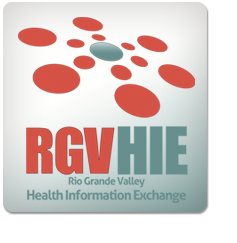The Rio Grande Valley Health Information Exchange (RGV HIE) intends to provide services to extreme South Texas and is comprised of a multi-disciplined, multi-stakeholder, multi-county representative board designed to provide guidance and oversight to the exchange of critical information. In working in close partnership with its stakeholders, the RGV HIE intends to provide health information exchange to the benefit of residents and providers by expanding access to quality health care and improving health outcomes for all people in the service region. From Brownsville to Laredo, patients will have the ability to provide medical information to those who need it most, just when they need it.
RGV HIE Objectives
The goal of HIE is to facilitate access to, and retrieval of, clinical information to provide safer, more timely, efficient, and effective patient-centered care. By having access to all patient data, health care providers can reduce time and expense associated with duplicate tests and effort spent locating missing patient information such as referrals, consults, radiology and lab results and other orders.
It provides the capability to electronically access clinical information across disparate health care information systems while maintaining the meaning of the information being exchanged. HIE is part of an evolving strategy on the national, state, regional, and local levels. These strategies may include telemedicine, social networking, patient-centered medical homes, and accountable-care organizations.
When clinical records are available at the point of care, patients receive more accurate and timely service. Benefits include:
- Improved patient safety.
- Reduce chance of medical error.
- Better workflow efficiency and lower administrative costs.
- Enhanced communication between hospitals, laboratories, pharmacies and physicians.
- Easier access and retrieval of clinical data.
- Records come to you directly from the original source where they are stored.
- Providers can make the right decision at the right time.
- Improved audit trails and chain of custody.
- Local control.
- Reduced duplicate testing



